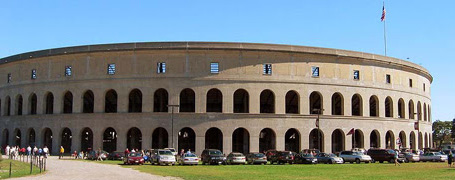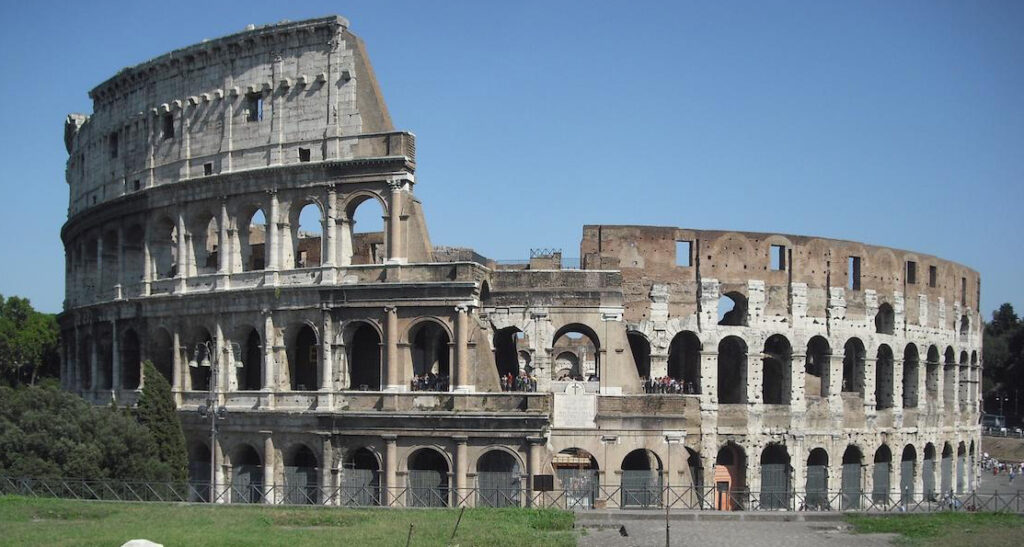I deliberately bolded the name of our nation in the title of this week’s blog for two obvious reasons. To wit:
a) It’s the 4th of July and b) The name is an actual name: Amerigo Vespucci, an explorer and contemporary of Cristoforo Colombo.
As crazy it might sound, most Americans never really make the association between America and Amerigo. If so, it’s casually dismissed as “quaint.”

According to this train of thought, the name isn’t really central to the United States. After all, we don’t speak Italian here, do we? And it is named after an obscure (to most Americans) explorer who might as well be as hazy as a character in a fairy tale. That’s as far as the Italy/America connection goes.
But is it?
For those of us who view the Italic heritage as more than just Nonna‘s meatballs, please check out the chart I composed at the end of my blog.
The simple fact is that the “Italian” roots of America go very deep. It was classical Italy, not England, whom our Founding Fathers used as a blueprint.

Then there are the facts which the American media ignores, including people like Thomas Jefferson’s neighbor, Filippo Mazzei, honored with a US postage stamp; over 1,000 places in America with Italian names; or events like the US war against the Barbary Pirates in 1801, assisted by Salvatore Catalano.
According to our national narrative, the Italians really never came to America until the great wave between 1880-1920.
Tell that to the Genovesi and Lucchese in San Francisco (1840s) and to the Sicilians in New Orleans (1850s).
Or, earlier, the Sicilian musicians recruited by Thomas Jefferson when he reorganized the US Marine Band in 1804, led by maestro Gaetano Carusi.
The next time you see that proud eagle displayed during July 4th, whether on a flag or a decoration, just remember: It is based on a Roman one.
And, last time I checked, Rome wasn’t a city in the United Kingdom. -BDC
| Classical Rome | Modern America |
| Political and economic superpower | same |
| Unified culturally diverse people | same |
| Government represented by a Senate | same |
| Protected citizens’ rights | same |
| Promoted the nuclear family | same |
| Organized efficient military | same |
| Built lasting roads | same |
| Built lasting sewer systems | same |
| Land and sea explorers | same |
| Eagle and dome as symbols of the nation | same |
| Latin mottoes on public buildings | same |




We have our work cut out for us. The American public does not know about our contributions. Our contributions are even before the Revolutionary war and during it, some of which you mention. Each year October Italian Heritage Month is an opportunity to learn more about our Italian heritage and to share it with the American public.
It highlights too, that today, cultural diversity is becoming a “bad term” yet as you point out a little “connecting of the dots” would go a long way in promoting a more truthful and expansive view of America. I was thinking of that during the 4th of July, when people were singing America the Beautiful……..at a certain point in life, you have to learn to unlearn some old history lessons and that can be very scary for some people, plus it challenges some vested interest myths.
Still for me I find it exciting and expansive….I am reminded too, that once I proposed to the local community college a class on Italian American Literature. I would have done the outline and all, but they in effect said , there was none! Now it is the wrong minority group or ethnic group…..to highlight……but knowledge is still knowledge, and the material is still there…..and at this point in life, I dont have the energy to do that battle anymore.
Sadly, I’m not very inspired by the upcoming generation. They, too, seem oblivious to the harm of unrelenting stereotypes. They not only ignore and/or enable stereotypes (and ignoring them IS a form of enabling), they’re not producing with any books, movies, projects, etc. to counter-balance them. Italic culture still equals = food, fun and fashion.
Partying is fine. We all need a work-life balance. But we do need to do some hard work, too.